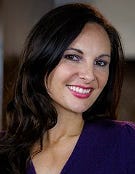How to Keep Your Channel Marketing Approach FreshHow to Keep Your Channel Marketing Approach Fresh
Executives with Mojo Marketing, Ingram Micro and Managed Sales Pros will share channel marketing insights at Channel Partners Evolution. Here's a preview.

When it comes to successful channel marketing, the rules of the game are changing rapidly.
Techniques that used to yield results aren’t necessarily relevant. And potential clients’ changing needs and ways of doing business further complicate the issue.
During an education session, part of the marketing and technology conference track sponsored by Cyxtera at Channel Partners Evolution, Oct. 9-12, in Philadelphia, Angela Leavitt, founder and CEO of Mojo Marketing; Jennifer Anaya, Ingram Micro‘s vice president of marketing for North America; and Carrie Simpson, founder and CEO of Managed Sales Pros, will share insights on new strategies that work for partners. Marie Rourke, chief strategist at WhiteFox Marketing, will moderate the session.
In a Q&A with Channel Futures, Leavitt and Simpson give a sneak peek of the information they plan to share with attendees.
Channel Futures: How is effective channel marketing changing?
Angela Leavitt: It’s getting much more targeted and data-driven. Gone are the days of blanket statements and one-size-fits-all. Effective marketing is laser-focused on a very specific target with a very specific message. This obviously takes a little more research and preparation. But since so many are still stuck in generalities, those who are willing to get surgical in their approach are reaping huge benefits.

Angela Leavitt
Angela Leavitt
Carrie Simpson: The demographic of people who are making buying decisions is going to change soon (soon — but not yet). The market is still skewed heavily toward business owners who weren’t raised with smartphones and ipads. IT business owners love IT (presumably that’s why they started their IT company). IT companies should remember that most of their prospects are age 40-plus and may not be early adopters of any kind of technology, so they may not be interested in new sales approaches. Sales and marketing will get far more complicated in 10 years as we transition sales processes in order to appeal to a new generation of tech-savvy business owners while not ignoring the older generation of not-quite-retirement-age CEOs. Then it will change completely in another 10 when the last of us “dinosaurs” retire. We’re not there yet, so don’t get ahead of yourself and accidentally alienate your current buyers.
CF: Are there marketing techniques that used to work, but don’t anymore?
AL: Anything that could fall under (the) “sprint” category from a marketing perspective has lost its potency. It used to be you could buy a list, send a few emails and make a few phone calls, and get decent results. Today’s marketing is about building relationships, being human and helpful, and thinking marathon, not sprint.
CS: I don’t think there are marketing techniques that no longer work, but the ways that we execute on and measure those techniques are getting more sophisticated. So we’re still cold calling, but we have the added advantages of using dialers to call more people faster. We have sophisticated customer-relationship-management (CRM) software with algorithms that help us figure out where (the) highest chances of success are within a certain target base, and even what times of day are the best to create a connection with a potential prospect. We’re creating better sales teams faster because we now have access to tools that help us easily identify potential top performers long before they are producing revenue by measuring activities and benchmarking — and we can just as easily figure out who’s phoning it in. Direct mail is still working — but we combine that old-fashioned approach with more sophisticated targeting, and we use online services to create and send marketing pieces. We still go to trade shows, but the ways we collect and manage the leads we acquire at the show have changed. The methods we’re using aren’t changing; the tools we’re using to execute and measure are.

Carrie Simpson
Carrie Simpson
CF: What are some of the keys to an effective marketing campaign?
AL: Know exactly who you are targeting. Stop thinking about telling everyone how wonderful you are. Start thinking about that person sitting behind the screen. Who are they? What do they need? What do they worry about? What are their likes and dislikes? Their questions and pain points? Go deep into who you are targeting, and then offer helpful resources and solutions with a human touch. Do this consistently and you will build a tribe of followers who will become customers when the timing is right.
CS: Consistency is the No. 1 key to effective marketing. You can’t expect anything you do once to produce any kind of measurable results. Stop-start-stop-start sales and marketing initiatives are expensive and ineffective. Whatever you want to do, make sure you’re ready to commit to it for a year.
CF: What do you hope those attending your session can learn and put into practice?
AL: I like to share real-world examples of success strategies that can be implemented immediately. I hope attendees will learn enough to make some incredibly positive changes in their marketing programs.
CS: My goal is to provide IT companies with the information they need to create effective outbound sales prospecting programs in-house, and to offer those who can’t or don’t want to build in-house with the tools they need to choose the right permanent or temporary alternative. People will leave my session with actionable, easy-to-implement, low-cost ideas that a business owner or sales leader can put into practice the very next day.
About the Author
You May Also Like


